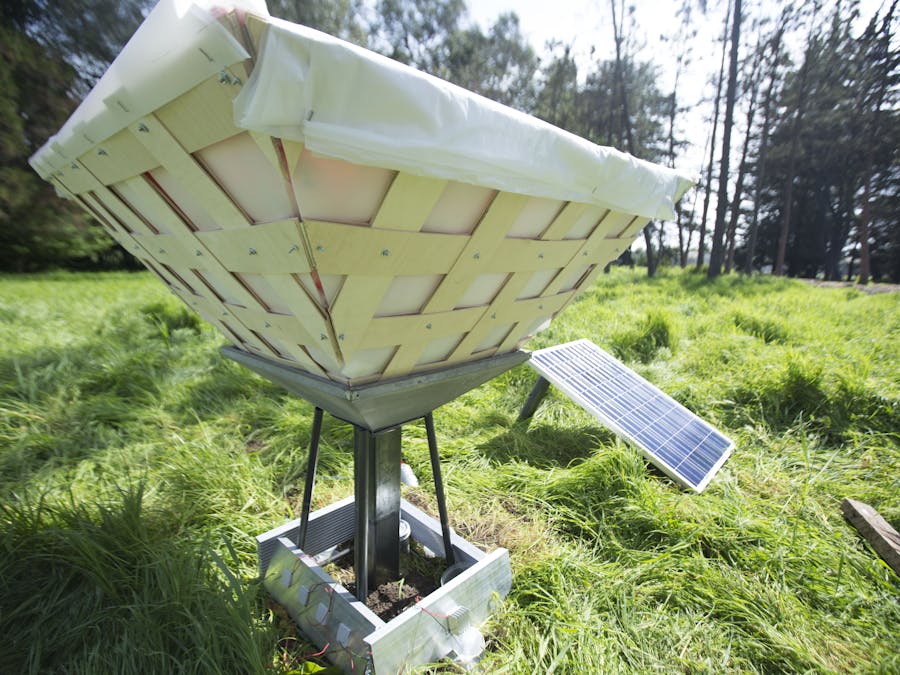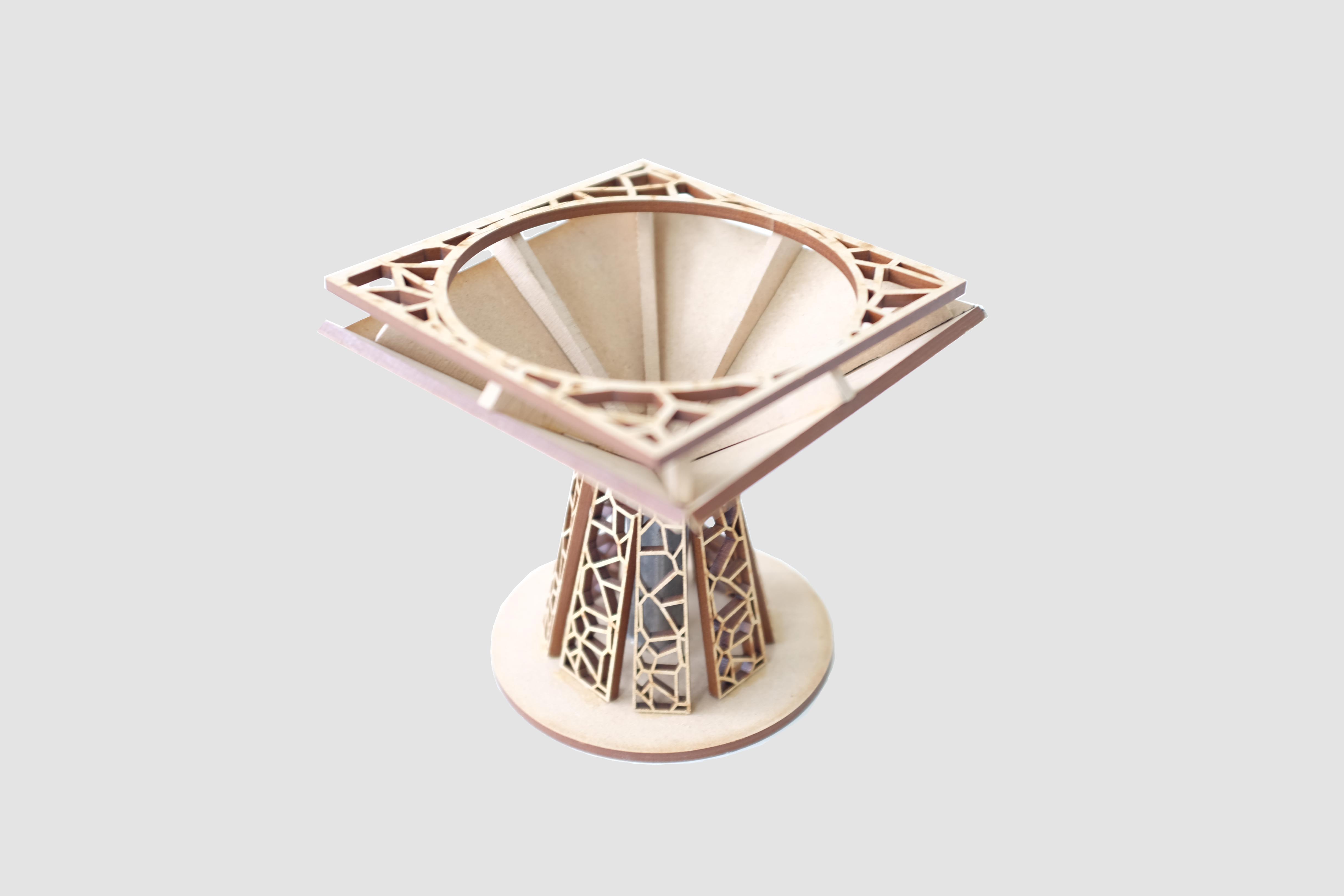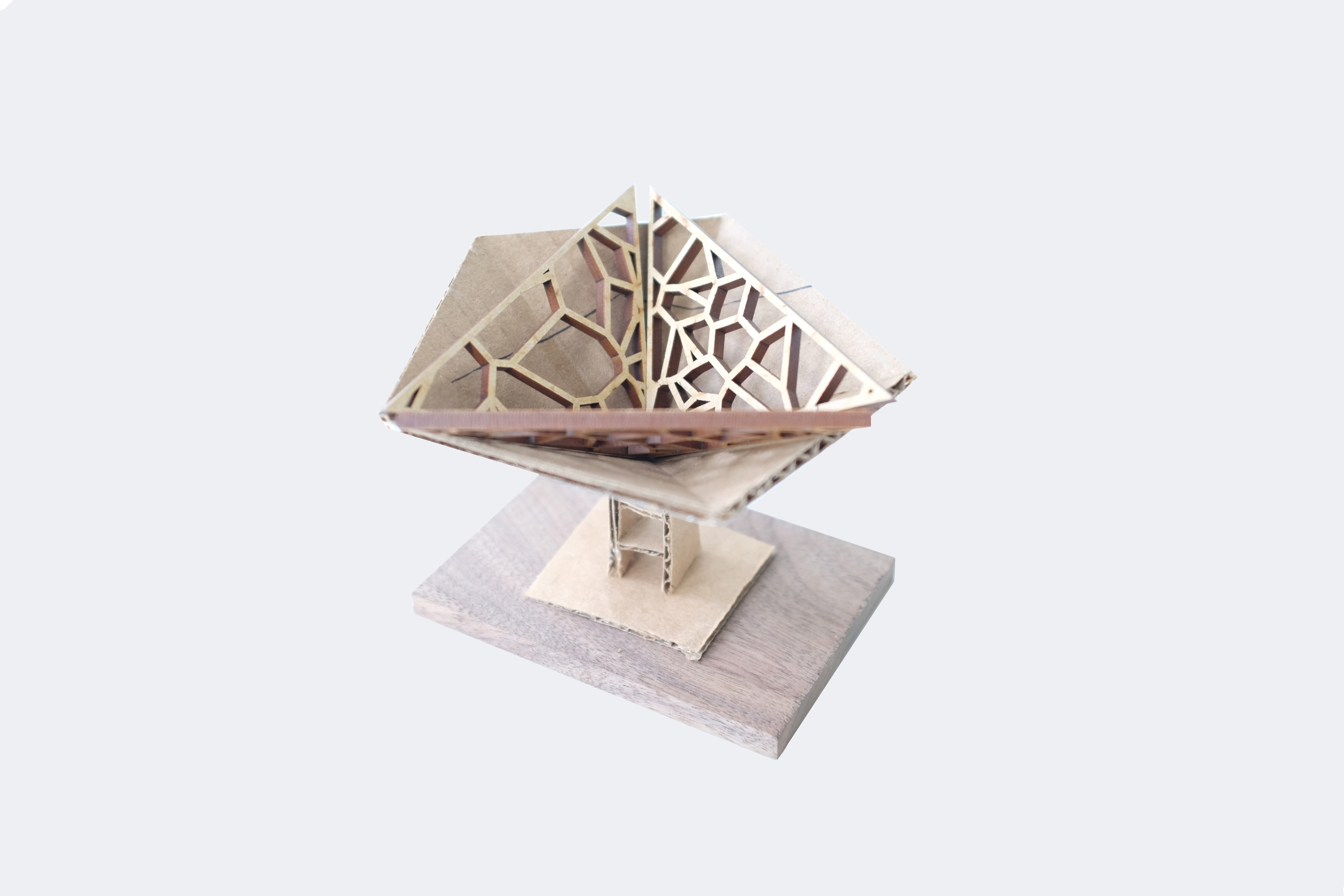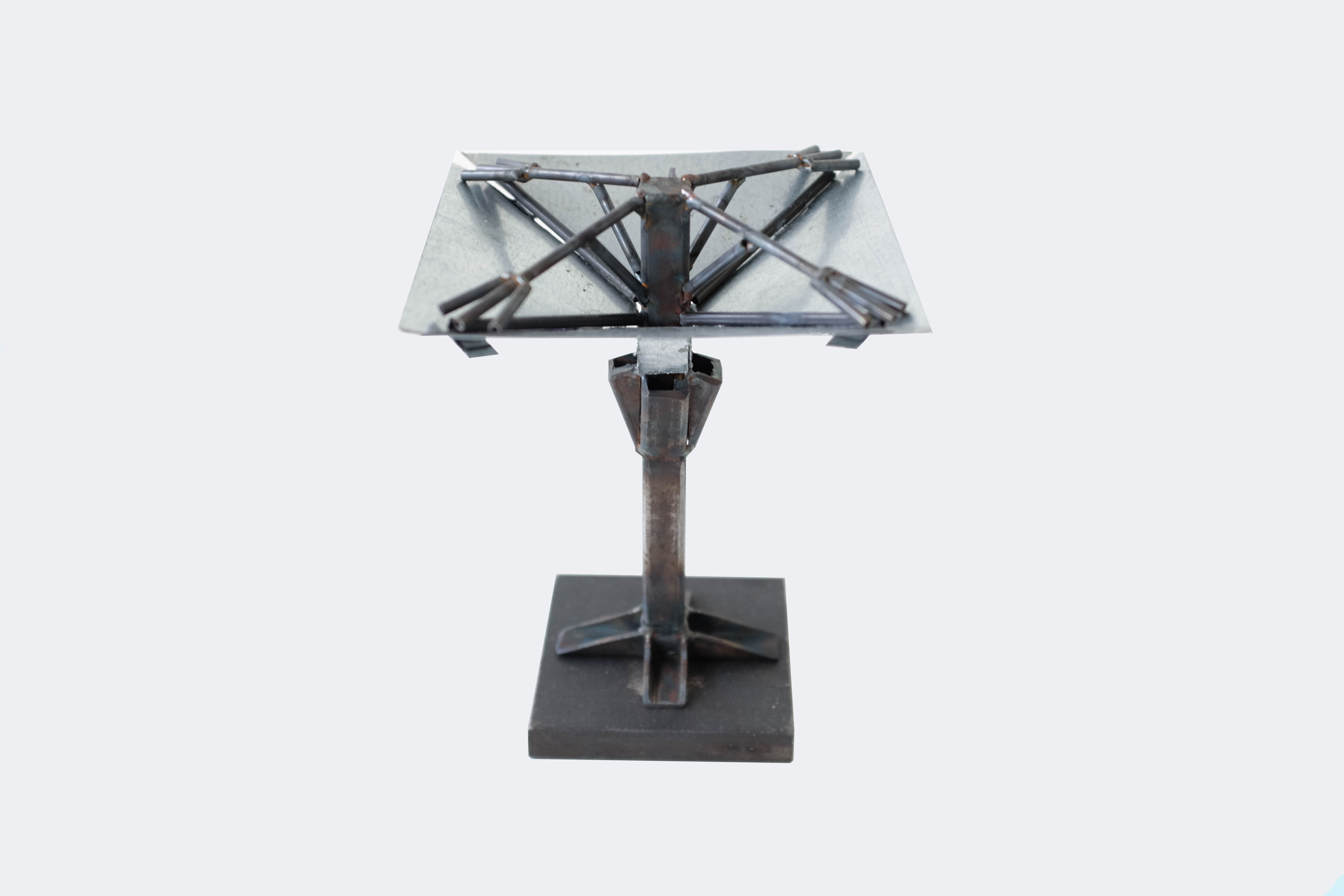HydroLily takes an interdisciplinary, bioinspired approach to the pressing global issue of expanding access to clean drinking water. Many communities must devote valuable resources to collecting water that may be unsafe and difficult to reach. The HydroLily team has designed a system that generates water from air by accelerating the naturally occurring process of condensation. The device has the potential to provide drinkable water to remote areas, independent of access to municipal power or water infrastructure. HydroLily was developed at a design space that opened just eight months ago on the UC Berkeley campus.
Taking a form inspired by the water lily, HydroLily's structure consists of a tetrahedron-framed "stem" and a woven wood basket. Within this structure, an active system and passive system work together. Solar panels power a thermoelectric cooler, while the inner basket surface is radiatively cooled using high emissivity materials.
The active system utilizes three thermoelectric cooling (TEC) units, solar panels, and a battery for energy storage. Energy from the solar panels helps power the TECs to create a 70C thermal gradient. This creates a cold surface that reaches a temperature below the local dew point, enabling condensation formation. To increase the rate of condensate, heat sinks help efficiently dissipate heat to widen the thermal gradient. Excess energy collected by the solar panels is stored in the battery, allowing HydroLily to continue working after sunset.
The passive system uses a special polyethylene (PE) film to radiate heat to the night sky. The film’s cooling effects also reduce the surface temperature below the dew point -- similar to natural formation of fog and dew. Based on the success of small-scale testing results, HydroLily's final design also incorporates a layer of fiberglass insulation between the wooden basket weave and the PE film. Insulation helps prevent unwanted heat transfer into the film while it continuously radiates heat.
HydroLily produced, on average, 291 ml of water each day at our test site near Berkeley despite cloudy weather conditions that limited the system’s ability to fully utilize solar energy. With this constraint, the prototype was capable of producing a full liter of water every three and a half days. We believe that a fully realized design is capable of even greater water generation, especially if a community pools resources together to build a water farm.
HydroLily’s interdisciplinary approach to a persistent problem is representative of a richly diverse ecosystem at UC Berkeley, one that has reached a new milestone this year with the opening of the Jacobs Institute for Design Innovation -- a cross-campus “hub for all things design.” In its marriage of bioinspiration and engineering, beauty and function, and social engagement and making, the HydroLily project exemplifies the student-driven innovations emerging from this up-and-coming space. With both a process and a product that embody the idea of “innovation by design,” it is worthy of recognition.
HydroLily was designed by Jessica Chiu (2018), Jimmy Huang (2016), YC Chen (2016) and Xian Sijun (2016) from the University of California, Berkeley.








Comments